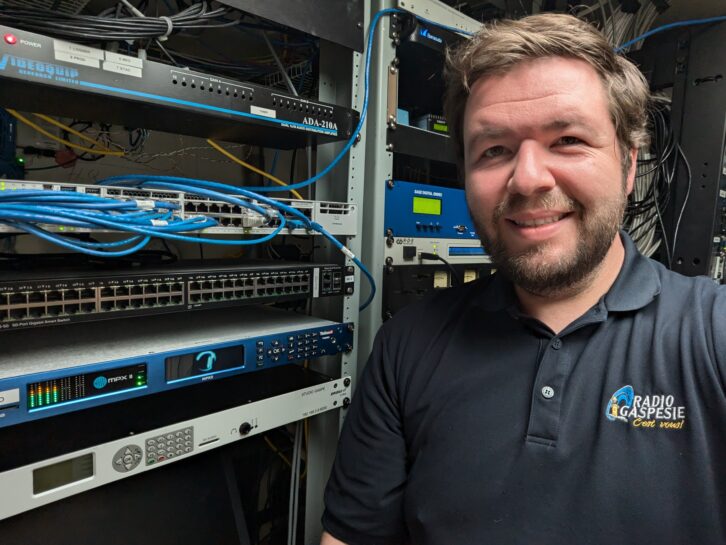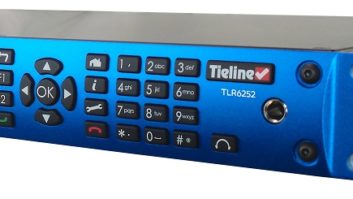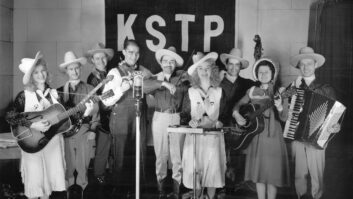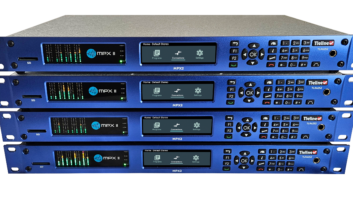Radio World Buyer’s Guide articles are intended to help readers understand why their colleagues chose particular products to solve various technical situations. This month’s articles focus on codecs and STLs.
Dave Ferguson is morning show host, musical director and station tech at CJRG Radio Gaspésie in Gaspé in Quebec, Canada. He started working there as a volunteer 17 years ago and climbed the ladder to perform his current roles.
“The best thing about IP for broadcasting is stability, quality and stability again,” he said. The station has integrated Tieline Merlin and Bridge-IT codecs as well as Report-IT into its network, along with Wheatstone AoIP gear. “This provides the various technological benefits of IP technologies to all areas of our studios and remote broadcasting applications.”
Radio Gaspésie has eight transmission sites due to the topographic nature of the region. Mountainous terrain makes direct transmissions difficult from site to site, so most are set up for point-to-point RF transmission.
Traditionally, coaxial cable was the primary path to the three most distant transmission sites. However, this year the station was informed that the service was to be terminated by the supplier, so it needed to set up alternative transmission paths to these transmission sites quickly.
“We wanted new equipment that would be easy to use and set up, flexible and stable. It also needed to seamlessly handle a signal from our Orban processing equipment along with RDS signals.”
The station was familiar with Tieline and found that its MPX codecs and ticked all the boxes. “Equipment cost was a key consideration and the MPX II lets you quickly and efficiently set up multi-unicast connections to several transmission sites,” Ferguson said. “The ability to distribute signals to three destinations from a single unit meant that we only needed four Tieline MPX units instead of six, which saved us a significant amount in hardware costs.”

The signal chain
Radio Gaspésie has high-speed fiber internet connections to each transmitter site, so they distribute uncompressed MPX signals. At the studio an Orban Optimod processes the signal from the Wheatstone infrastructure and outputs composite MPX, which is sent to two destinations: the MPX II codec distributing signals to transmission sites, and the main antenna transmitter.
“We can also insert RDS signals to all transmission sites now, offering song titles and various information. This wasn’t possible prior to installation of the MPX codec at the studio.”
A dedicated high-speed internet connection was ordered for each MPX unit to simplify setup and ensure stability of internet connections. Each of these connections is attached to a router, which helps control the MPX units through port forwarding. The MPX units are then plugged into the transmission equipment.
“We use an analog output on the Tieline MPX II, but plan to switch to a digital output on the unit when we upgrade our transmitters at these sites in upcoming years,” he said. “The flexibility of the Tieline equipment has helped us delay the purchase of digital transmitters.”
They have configured the MPX II to send a single uncompressed MPX signal over three multi-unicast connections to the transmitters.
“The flexibility, stability and ease of setup have ensured that the MPX codec deployment has been a great success. We also had help from Electromarine, who handles part of our transmission infrastructure. Yvan Dupuis was a great help in setting up and testing the equipment before installation.”
Ferguson said the MPX codecs have delivered 100% uptime in their first four months. He described the audio as extremely clean, with no buffering issues or audio artifacts. He uses the Toolbox HTML5 Web-GUI as a quick and efficient way to make adjustments if necessary. “The use of port forwarding and VPNs allows us to connect directly to the appropriate codec GUI and make any changes from the comfort of our office.”






